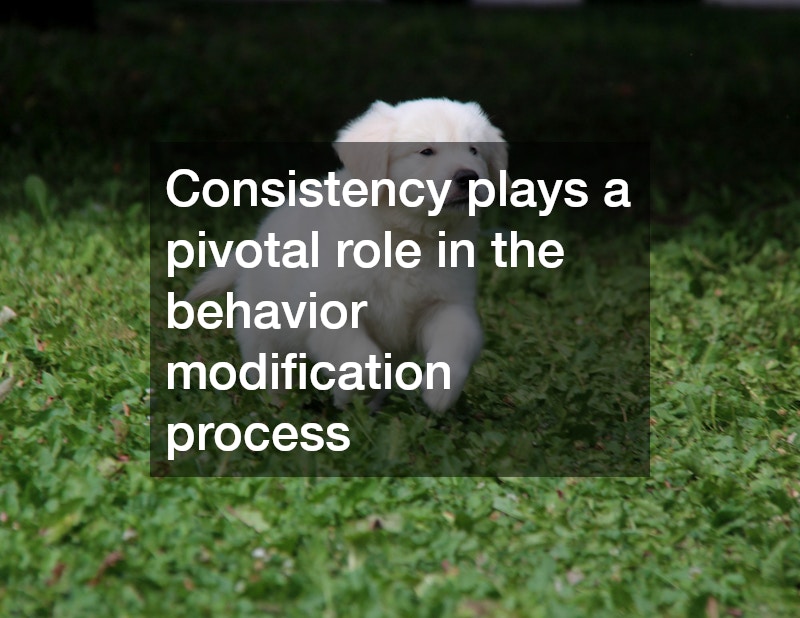Explore the importance of consistency in dog training, as emphasized by local dog trainers, and examine common questions and topics to understand how consistency can make a significant difference in the training process.
When it comes to dog training, consistency is one of the most important factors in shaping a well-behaved and confident pet. Dogs thrive on structure and clear communication, and they learn best when expectations remain the same day after day.
Whether teaching basic commands, correcting unwanted behaviors, or reinforcing good manners, consistency helps dogs understand what is expected of them and builds trust between pet and owner. Without it, even the best training techniques can fall short. Establishing a steady routine and responding to behaviors in predictable ways creates the foundation for lasting success in any training program.
Clear Expectations
Consistency is crucial in establishing clear expectations for your dog. Local trainers explain how dogs learn best when they receive the same cues and commands every time. Repetitive exposure to commands and cues aids in reinforcing the learning process for dogs. When a dog can predict the response based on a cue, it fosters confidence and understanding. This understanding is vital in building a solid foundation for more advanced training.
Furthermore, consistency builds a robust communication channel between the owner and the dog. Effective communication is critical for successful training outcomes. When the owner and dog share a common understanding of cues, it reduces frustration and enhances learning efficiency.
Behavior Modification
Consistency plays a pivotal role in the behavior modification process. Dog trainers discuss how repeated reinforcement and clear guidelines lead to long-lasting behavioral changes in dogs. Behavior modification relies heavily on the dog’s understanding of what is expected of them. Without consistent reinforcement of desired behaviors, dogs may become confused and revert to undesired behaviors. Therefore, dog trainers often stress the importance of applying consistent methods during training to encourage reliable outcomes.
Additionally, local trainers have found that consistency not only helps reinforce good behavior but also aids in correcting unwanted behaviors. By applying the same responses to negative behaviors consistently, owners create a clear distinction between acceptable and unacceptable actions for their pets. This clarity accelerates the modification process.
Common Mistakes
Many pet owners make mistakes that can hinder training progress. One common mistake pet owners make is using different commands for the same action. This inconsistency can create confusion for the dog, making it difficult for them to understand what is expected. It’s essential to pick one command and stick with it to reinforce learning.
Another frequent error is varying the rewards for behaviors. When a dog receives praise or treats inconsistently, it can lead to uncertainty about what behavior is being rewarded. Local trainers urge owners to maintain a steady approach to rewards, ensuring that dogs understand the link between their actions and the positive reinforcement provided.
Consistency at Home
Local trainers can offer practical tips for maintaining consistency during training sessions at home, focusing on setting routines and involving the whole family in the training process. Establishing a training routine can significantly enhance consistency in the training environment. Regularly scheduled training sessions help to create a structure that both the dog and family members can adapt to easily. Consistent training times can help reinforce the learning process.
Involving the entire family in training also plays a vital role. When all family members use the same commands and training techniques, it reduces confusion for the dog. Consistency comes from a team effort, so it’s essential to agree on signals and commands among all family members to foster a unified approach to the training process.
Timing and Reinforcement
Timing is an essential factor in reinforcing desired behaviors. Effective timing can greatly influence a dog’s understanding and learning capability. When a response occurs closely after an action, the connection between the behavior and the consequence becomes clearer. Local trainers emphasize the importance of giving praise or correction immediately after the behavior to strengthen this association.
Moreover, timing is not just about the immediacy of the response but also its predictability. If a dog learns to expect a reward immediately following a desired behavior, they are more likely to repeat it. Over time, this builds a sense of assurance in the learning process, making them more receptive to instructions.
Consistency is a fundamental principle in successful dog training. By understanding its significance and implementing strategies suggested by local trainers, dog owners can create a more effective training environment for their pets.
Consistent training is what transforms daily lessons into lifelong habits. When owners commit to clear commands, regular practice, and uniform responses, their dogs learn faster and feel more secure. This steady approach not only improves obedience but also strengthens the emotional bond between humans and their pets. A consistent trainer communicates reliability, patience, and confidence—qualities every dog responds to positively. By staying consistent, owners set their dogs up for success and create a more harmonious relationship built on mutual understanding and respect.




